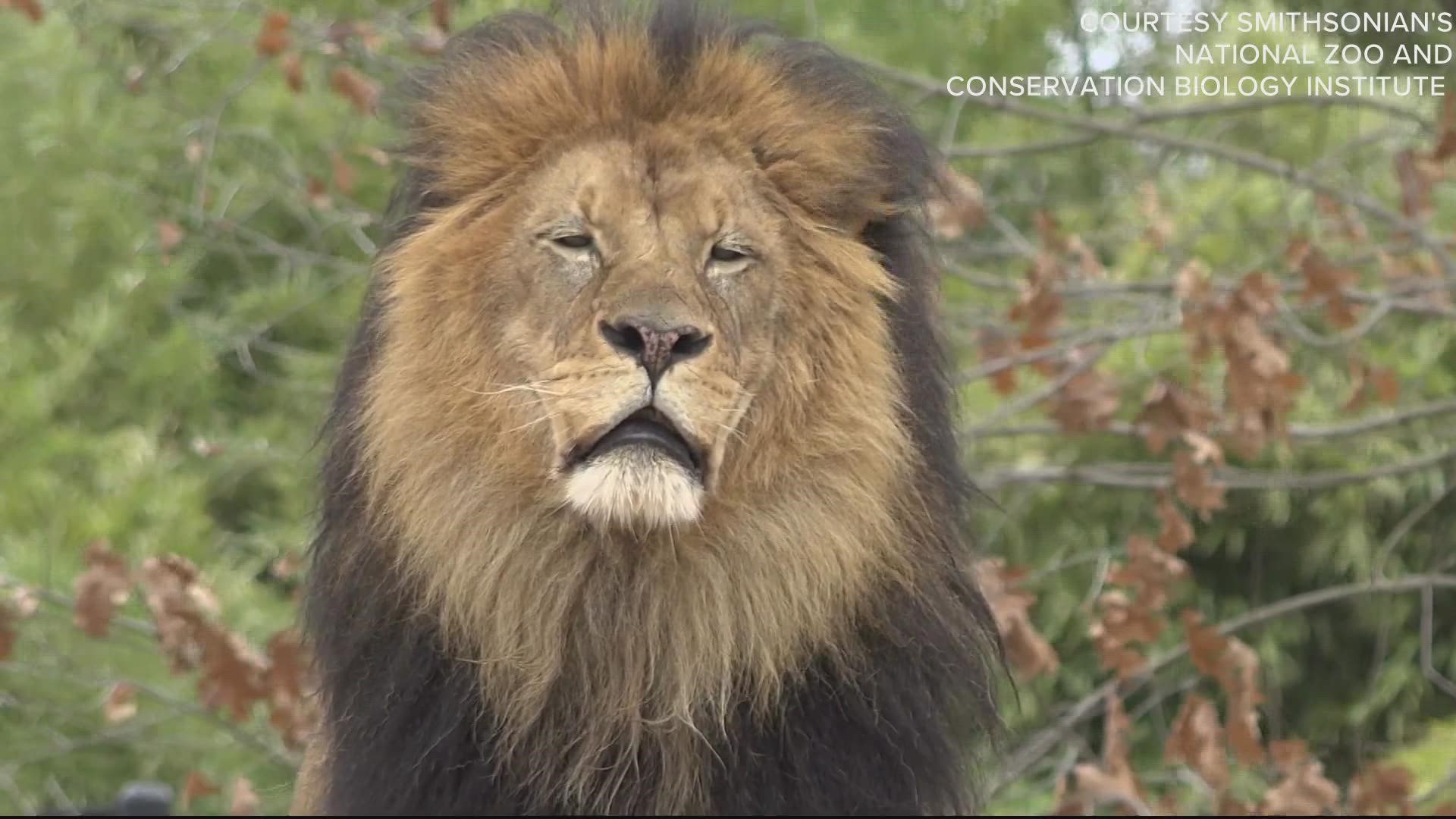WASHINGTON — The Smithsonian's National Zoo announced the passing of their beloved African lion, Luke, on Friday.
He was humanely euthanized on October 19 at the age of 17, the median life expectancy for African lions kept in captivity.
Staff at the zoo say Luke was invaluable to their breeding program. After arriving at the zoo in 2006, he sired 13 cubs and four litters.
Animal care staff had been treating Luke for occasional discomfort in his right forelimb since 2016, when keepers noticed that he was not bearing his full weight in his leg and was showing signs of significant discomfort.
Veterinarians anesthetized Luke and examined his leg, shoulder, neck and spine. A CT scan revealed an intervertebral compressive disc lesion on Luke’s spine. However, staff decided not to perform surgery due to significant complications that could arise.
Over the next few years, the veterinary team gave Luke various treatments for his spinal disease: steroid injections, anti-inflammatory medications, other oral pain medications, and deep-tissue laser therapy, electroacupuncture and dry-needle acupuncture on the affected areas.
Keepers say Luke was trained to voluntarily participate in awake health exams, including routine weigh-ins and blood draws.
On October 14, keepers noticed Like had lost eight kilograms, 17.6 pounds, and he was experiencing repeated episodes of lack of appetite. Additionally, his hind limbs seemed to have lost a lot of muscle mass.
During an exploratory exam on October 19 to identify what was causing Luke's weight loss and lack of appetite, veterinarians found several cystic masses throughout his liver. They also discovered moderate-to-severe progression of his spinal condition—several of his cervical vertebra had fused.
Given these findings, it was decided to euthanize Luke to preserve his quality of life.
RELATED:
Born on a private reserve in South Africa in 2005, Luke first arrived at the Smithsonian's National Zoo in October of 2006 following a breeding recommendation from the Association of Zoos and Aquariums’ Species Survival Plan (SSP).
At that time, Luke was the most genetically valuable lion in the North American population because his genes were not represented in U.S. zoos.
“Luke was truly the ‘king’ of the Great Cats exhibit,” said Craig Saffoe, curator of Great Cats, Kids’ Farm, Claws & Paws Pathway and Andean bears. “He was gentle with his mates, Naba and Shera, and an extremely patient and protective father to all 13 of the cubs he sired. Luke has left a lasting legacy, not only in the cubs he contributed to his species’ survival, but also in the millions of visitors who were able to gain a deeper knowledge of and appreciation for African lions because of who he was as the patriarch of his pride.”
Observing his behavior gave the Great Cats team valuable insight into lion breeding and cub rearing behaviors. His contributions to his species’ survival helped add to scientists’ knowledge about African lion reproductive physiology.
Hunting, disease and habitat loss have contributed to a decline in the population of African lions, which are considered a vulnerable species by the International Union for Conservation of Nature. During the past decade, lion populations have declined by about 30 percent. Currently, an estimated 20,000 lions remain in the wild.
WATCH NEXT:

